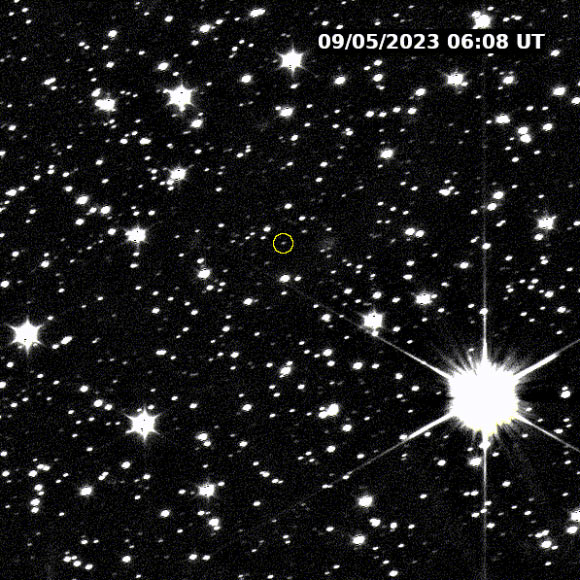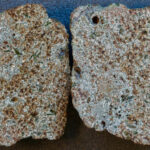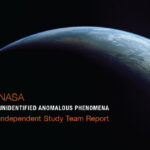The small main-belt asteroid (152830) Dinkinesh was recently added to NASA’s Lucy mission and will be the first fly-by target on November 1, 2023.
This image of the main-belt asteroid Dinkinesh was captured by NASA’s Lucy spacecraft on September 5, 2023. The brightest star in this field of view is HD 34258, a 7.6 magnitude star in the constellation of Auriga that is too dim to be seen by the naked eye from Earth. At this distance, Dinkinesh is only 19 magnitude, about 150,000 times fainter than that star. Image credit: NASA’s Goddard Space Flight Center / SwRI / Johns Hopkins APL.
Dinkinesh, also known as 1999 VD57, is a stony main-belt asteroid approximately 900 m (3,000 feet) in diameter.
It was discovered by the Lincoln Near-Earth Asteroid Research (LINEAR) survey on November 4, 1999.
Dinkinesh rotates with a period of 52.67 hours and varies in brightness with a light curve amplitude of 0.39 magnitudes, indicating it has an elongated shape.
It is the first of 10 asteroids that NASA’s Lucy spacecraft will visit on its 12-year voyage of discovery.
The asteroid was identified as a flyby target for the mission in January 2023, which will approach 450 km (280 miles) from the asteroid on November 1, 2023.
Lucy took its first images of Dinkinesh while it was 23 million km (14 million miles) away from the asteroid.
The observations were made by the Lucy LOng Range Reconnaissance Imager (L’LORRI) high-resolution camera onboard Lucy.
Over the next two months, the spacecraft will continue toward the asteroid until its closest approach of 425 km (265 miles).
The Lucy team will use this encounter as an opportunity to test out spacecraft systems and procedures, focusing on the spacecraft’s terminal tracking system, designed to keep Dinkinesh within the instruments’ fields of view as the spacecraft flies by at 4.5 km/s (10,000 mph).
Lucy will continue to image the asteroid over the next months as part of its optical navigation program, which uses the asteroid’s apparent position against the star background to determine the relative position of Lucy and Dinkinesh to ensure an accurate flyby.
Dinkinesh will remain an unresolved point of light during the long approach and won’t start to show surface detail until the day of the encounter.




